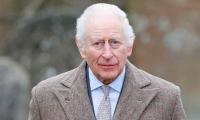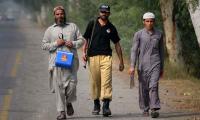KARACHI: With the Election Commission of Pakistan having announced March 9 as the date for the presidential election and with there now being two contenders for the post — Asif Ali Zardari for the coalition parties and Mahmood Khan Achakzai for the PTI-affiliated independents who are now part of the Sunni Ittehad Council — the presidential election has started becoming clearer.
The process to elect the president of Pakistan is given mostly in the Second Schedule of the constitution while the president’s role is discussed in Articles 41-49 of the constitution. First, the basics: according to Article 41 of the constitution, the country’s head of state will be the president who will “represent the unity of the republic.” The president is to be Muslim and be not less than 45 years of age and also be qualified to be elected a member of the National Assembly.
So, how does the president of Pakistan get elected? It starts with the ECP issuing a date for the election. For Election 2024, this step of the process has already been completed. Next comes the submission of nomination papers, the deadline for which was to be yesterday (March 2). Nominations are submitted with presiding officers in Lahore, Karachi, Peshawar and Quetta. This step has also been completed. Now comes the scrutiny of the nomination papers by the returning officers. This is supposed to be held on March 4. Once the papers are scrutinised, the ECP will publish a list of nominated candidates.
This is how we come to March 9, when the voting process for the president of Pakistan takes place. The ECP has announced that the process will take place between 10am and 4pm on March 9.
Who will be voting for the president? Since the president is the face of the federation, s/he gets to be elected by the full electoral college — parliament which comprises the National Assembly and Senate, and the four provincial assemblies. The Senate and National Assembly vote on the basis of one member, one vote but the four provincial assemblies follow a different formula. Under this formula, only the Balochistan Assembly gets a one-member, one-vote option. As the smallest assembly, the Balochistan Assembly sets the standard for how the votes are divided in the other three provincial assemblies — whose votes are counted by dividing them by the total strength of the Balochistan Assembly (which has 65 numbers). For example, the Punjab Assembly’s total strength of 371 will be divided by 65. The resultant 5.71 is the number of votes counted as one vote in the Punjab Assembly. The same formula of weightage is followed in Sindh and Khyber Pakhtunkhwa.
Where does the voting take place? The polling for the president takes place in a special session of parliament in Islamabad in which both senators and MNAs vote for the presidential candidate of their choosing. The provincial assemblies vote in separate sessions called in their respective legislatures.
How does the voting take place? According to the Second Schedule, the ECP will conduct the presidential election, with the chief election commissioner as the returning officer for the election. Presiding officers appointed by the ECP will preside over the election in parliament and in the provincial assemblies.
The process of the vote itself is also given in the Second Schedule. On March 9, as the electoral college gathers to vote in the president of Pakistan, every member of parliament as well as in each provincial assembly will be issued a ballot paper.
Voting will be conducted via secret ballot — which means each member will vote by marking the ballot papers which will have the names of all the candidates in alphabetical order. The vote will then be deposited in a ballot box placed in front of the presiding officer. What happens after the electoral college has voted? Once the voting has concluded, the presiding officer will, in the presence of such of the candidates or their authorized representatives, open and empty the ballot boxes and examine the ballot papers. Invalid votes will be rejected, and the total number of valid votes will be told to the chief election commissioner. The votes from the provincial assemblies will be counted according to the formula mentioned above.
Coniferous forest in Gallies Biosphere Reserve. — UNESCO/File ABBOTTABAD: In a significant conservation effort, the...
Khyber Pakhtunkhwa Chief Minister Ali Amin Gandapur addresses the Derajat Festival 2025 on April 20, 2025. —...
This representational image shows medicines. — Unsplash/FileBANNU: Pakistan Tehreek-e-Insaf local activists have...
Miners fix a collapsed coal mine in KP. — AFP/FileBARA: The Mines Owners Association of Khyber District on Sunday...
Deputy Commissioner Tank Tanveer Khattak gestures as he speaks in a meeting on April 18, 2025. —...
KP police officer interacts with the personnel in this image, released on November 8, 2023. — Facebook@Khyber...







